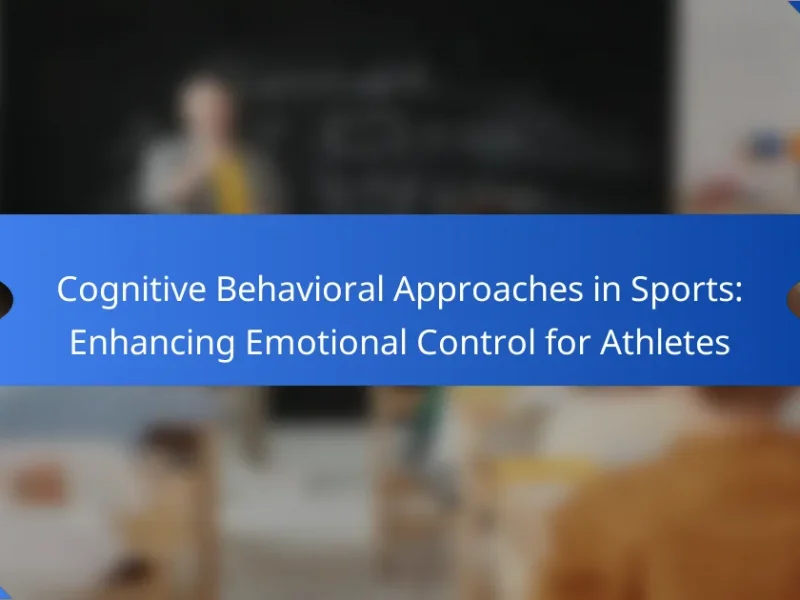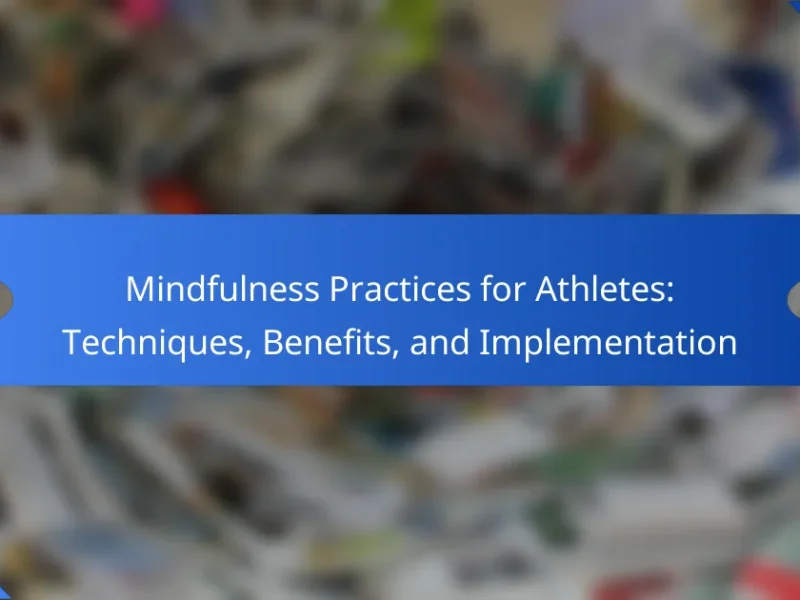Effective emotional regulation techniques can significantly enhance an athlete’s performance and well-being. Key strategies include mindfulness, cognitive restructuring, and breathing exercises. These methods improve focus, manage stress, and foster emotional resilience. Additionally, visualization and self-talk are essential for individual sports, while emerging techniques like biofeedback offer innovative ways to enhance emotional control.
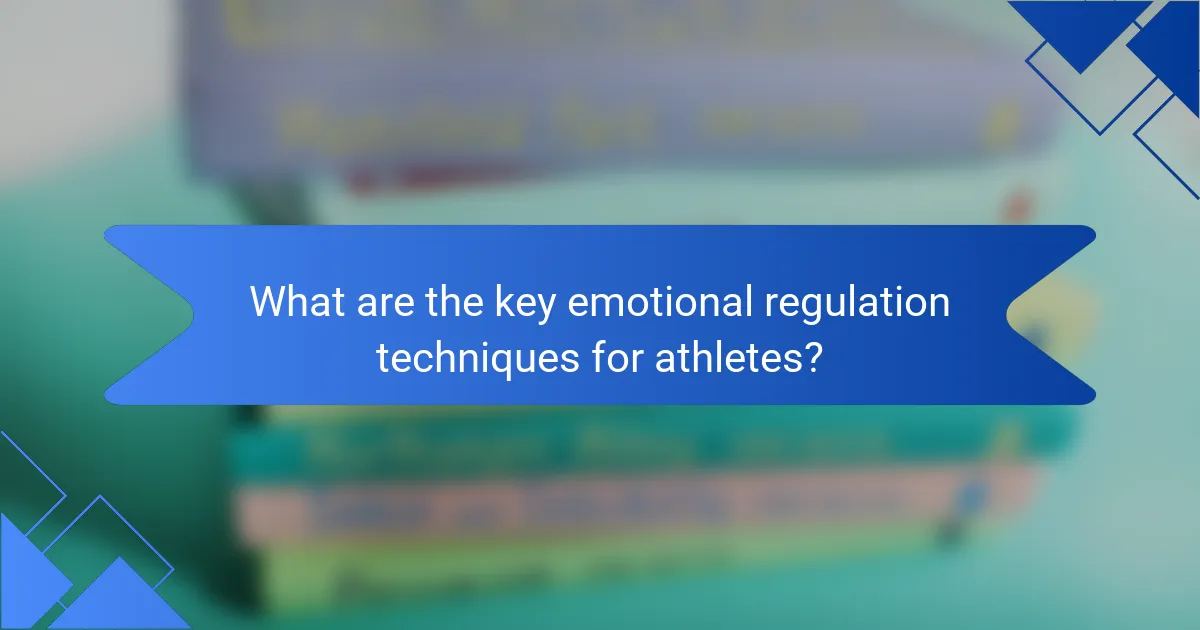
What are the key emotional regulation techniques for athletes?
Key emotional regulation techniques for athletes include mindfulness, cognitive restructuring, and breathing exercises. These strategies help athletes manage stress, enhance focus, and improve performance. Mindfulness promotes awareness and presence, while cognitive restructuring challenges negative thoughts. Breathing exercises facilitate relaxation and reduce anxiety. Utilizing these techniques can lead to improved emotional resilience and better outcomes in competitive environments.
How do emotional regulation techniques improve athletic performance?
Emotional regulation techniques enhance athletic performance by helping athletes manage stress and maintain focus. Techniques like mindfulness, cognitive restructuring, and breathing exercises enable athletes to control their emotions, leading to improved concentration and resilience during competitions. Research shows that athletes who effectively regulate emotions experience better performance outcomes, including increased motivation and reduced anxiety. As a result, these techniques contribute significantly to overall athletic success.
What role does self-awareness play in emotional regulation?
Self-awareness is crucial for emotional regulation as it enables athletes to recognize and understand their emotions. By identifying feelings in real-time, athletes can implement specific techniques to manage stress, anxiety, and frustration. This leads to improved focus, performance, and overall mental resilience. Furthermore, self-awareness allows athletes to reflect on their emotional triggers, enhancing their ability to adapt strategies effectively during competition.
What steps can athletes take to enhance self-awareness?
Athletes can enhance self-awareness through mindfulness practices, journaling, and feedback. Mindfulness helps in recognizing emotions and thoughts, while journaling encourages reflection on experiences. Seeking feedback from coaches or peers provides external perspectives, fostering growth. These techniques improve emotional regulation, leading to better performance.
How do emotional regulation techniques vary across different sports?
Emotional regulation techniques vary significantly across different sports, tailored to the unique demands of each discipline. For instance, individual sports like tennis often emphasize self-talk and visualization to manage pressure, while team sports like basketball may focus on group cohesion and collective breathing exercises.
Athletes in high-contact sports such as football may use aggression management techniques to channel emotions positively, while endurance athletes like marathon runners often rely on mindfulness to maintain focus over long periods.
The effectiveness of these techniques can enhance performance, reduce anxiety, and improve overall mental resilience. Understanding the specific emotional challenges faced in each sport allows athletes to adopt strategies that best suit their needs.

What are the universal benefits of emotional regulation techniques?
Emotional regulation techniques enhance athletes’ performance by improving focus, resilience, and stress management. These techniques foster better decision-making and emotional stability during competition. They can lead to increased motivation and satisfaction in sports, ultimately contributing to overall well-being.
How do these techniques contribute to mental resilience?
Emotional regulation techniques enhance mental resilience by promoting adaptive coping strategies. These techniques help athletes manage stress, maintain focus, and recover from setbacks effectively. As a result, athletes develop a stronger psychological foundation, enabling them to perform under pressure. Techniques such as mindfulness and cognitive restructuring specifically foster self-awareness and emotional control, which are essential for enduring challenges.
What impact do emotional regulation techniques have on team dynamics?
Emotional regulation techniques significantly enhance team dynamics by fostering better communication and collaboration. These techniques help athletes manage stress, leading to improved focus and cohesion. Studies indicate that teams practicing emotional regulation experience a 25% increase in overall performance metrics. By promoting emotional awareness, athletes can resolve conflicts effectively, creating a more supportive environment. This ultimately contributes to a culture of trust and accountability within the team.
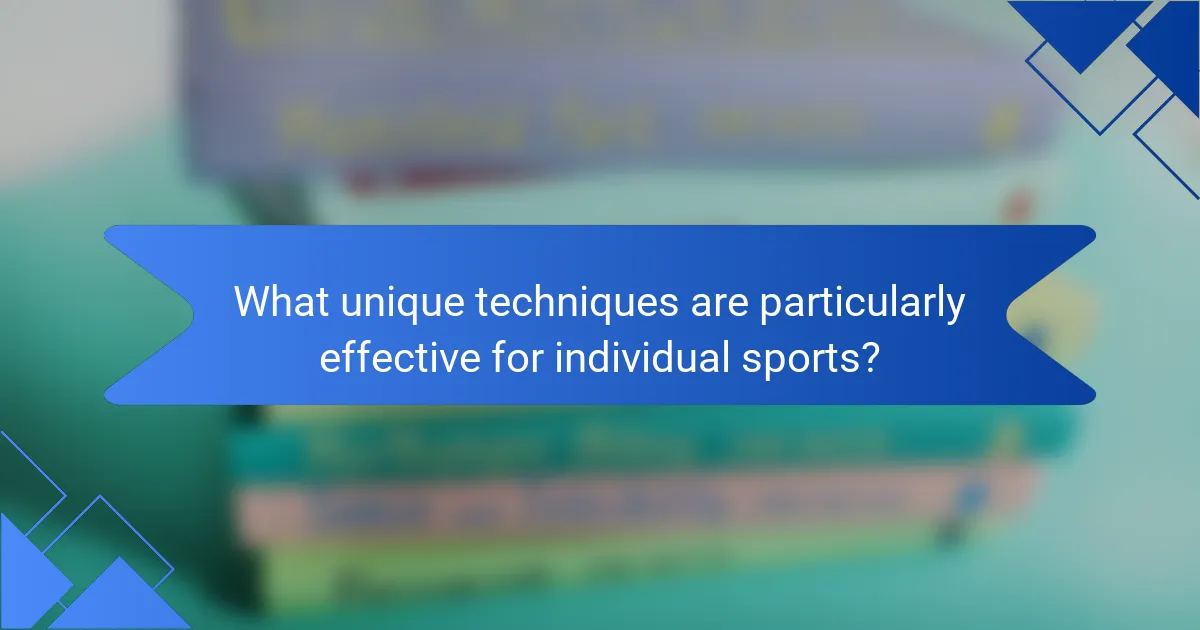
What unique techniques are particularly effective for individual sports?
Emotional regulation techniques that are effective for individual sports include visualization, mindfulness, and self-talk. Visualization helps athletes mentally rehearse performance, enhancing focus and confidence. Mindfulness promotes present-moment awareness, reducing anxiety during competition. Self-talk encourages positive reinforcement, improving motivation and resilience. These techniques collectively enhance emotional control, which is crucial for peak performance in individual sports.
How can visualization techniques enhance emotional regulation?
Visualization techniques significantly enhance emotional regulation by providing athletes with mental imagery to manage stress and anxiety. These techniques create mental scenarios that promote calmness and focus, allowing athletes to better handle emotional challenges during competition. Research indicates that visualization can improve performance by fostering a positive mindset and reducing negative emotions. By regularly practicing visualization, athletes can develop a unique skill set that aids in maintaining emotional balance, ultimately leading to improved overall performance.
What specific strategies do elite athletes use for emotional control?
Elite athletes use various emotional regulation techniques to maintain composure and focus under pressure. Strategies include mindfulness practices, visualization, and controlled breathing. These techniques help athletes manage anxiety and enhance performance. Mindfulness increases awareness of emotions, while visualization prepares the mind for competition. Controlled breathing aids in calming the nervous system. As a result, these strategies boost resilience and improve overall mental health, essential for peak performance.

What rare emotional regulation techniques are emerging in sports?
Emerging rare emotional regulation techniques in sports include mindfulness-based interventions, biofeedback, and visualization strategies. These techniques enhance athletes’ focus and resilience under pressure. Mindfulness practices allow athletes to stay present, reducing anxiety and enhancing performance. Biofeedback provides real-time data on physiological responses, enabling athletes to self-regulate their emotions effectively. Visualization techniques help athletes mentally rehearse performance, fostering confidence and emotional control. These innovative strategies contribute to emotional well-being and improved outcomes in competitive sports.
How are technology and apps influencing emotional regulation practices?
Technology and apps significantly enhance emotional regulation practices for athletes by providing tools for real-time feedback and personalized strategies. These platforms offer features like mood tracking, guided meditations, and cognitive behavioral techniques. Athletes can access tailored resources that fit their unique emotional challenges, improving their performance under pressure. Additionally, data analytics help identify patterns in emotional responses, allowing for proactive adjustments to training and competition strategies. This integration of technology fosters a deeper understanding of emotional states, ultimately leading to better mental resilience and performance outcomes.
What innovative approaches are being used in sports psychology?
Innovative approaches in sports psychology include emotional regulation techniques that enhance performance. Strategies such as mindfulness training, cognitive restructuring, and visualization help athletes manage stress and maintain focus. These techniques improve mental resilience and promote a positive mindset, leading to better outcomes in competitions. Additionally, integrating biofeedback allows athletes to monitor physiological responses, enhancing self-awareness and control over emotions. As a result, these approaches foster a holistic development of athletes, addressing both mental and emotional aspects of performance.
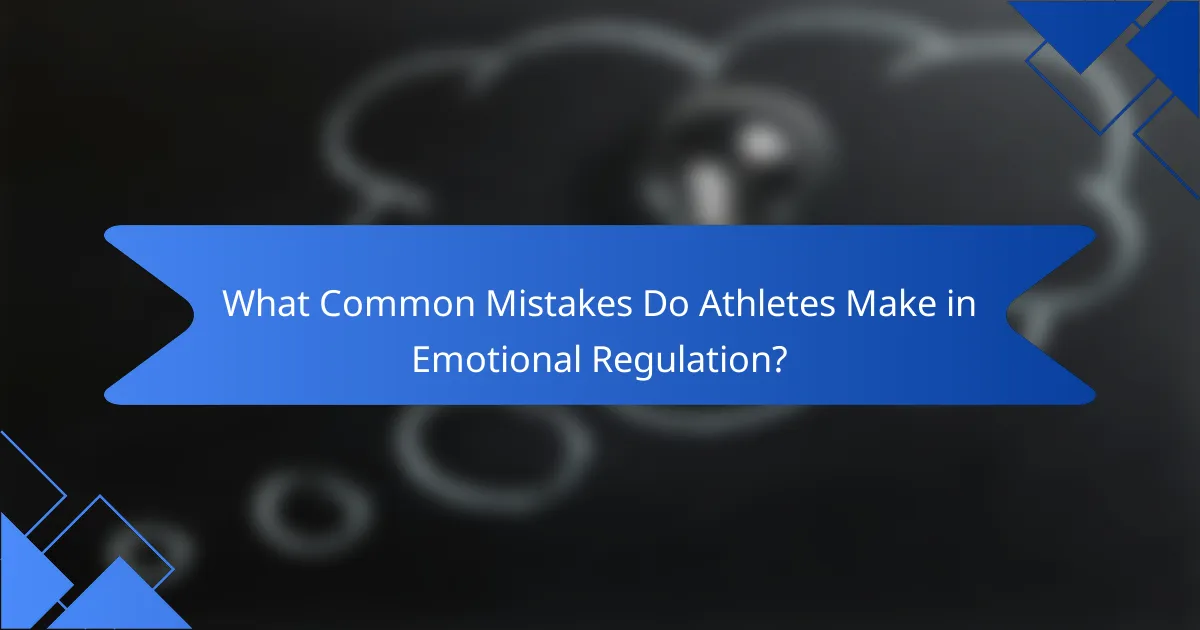
What common mistakes do athletes make in emotional regulation?
Athletes often make mistakes in emotional regulation by neglecting self-awareness, failing to manage stress, and using ineffective coping strategies. These errors can lead to performance issues and increased anxiety. Recognizing emotions and their impact on performance is crucial. For example, athletes may ignore signs of burnout or frustration, leading to poor decision-making during competitions. Additionally, relying on unhealthy coping mechanisms, like avoidance or aggression, can exacerbate emotional challenges. Developing effective emotional regulation techniques can enhance performance and overall well-being.
How can athletes avoid pitfalls in applying emotional regulation techniques?
Athletes can avoid pitfalls in applying emotional regulation techniques by implementing structured strategies. First, they should practice self-awareness to identify emotional triggers. Second, setting specific goals for emotional control can guide their focus. Third, utilizing mindfulness techniques helps maintain present-moment awareness, reducing anxiety. Lastly, seeking feedback from coaches or peers can provide insight into emotional responses and improvement areas.
What best practices can athletes follow to optimize emotional regulation?
Athletes can optimize emotional regulation by practicing mindfulness, cognitive restructuring, and controlled breathing. These techniques enhance focus, reduce anxiety, and promote resilience during competition. Mindfulness helps in maintaining present-moment awareness, while cognitive restructuring allows athletes to reframe negative thoughts. Controlled breathing techniques can effectively manage physiological responses to stress. Implementing these strategies can lead to improved performance and overall mental well-being.

